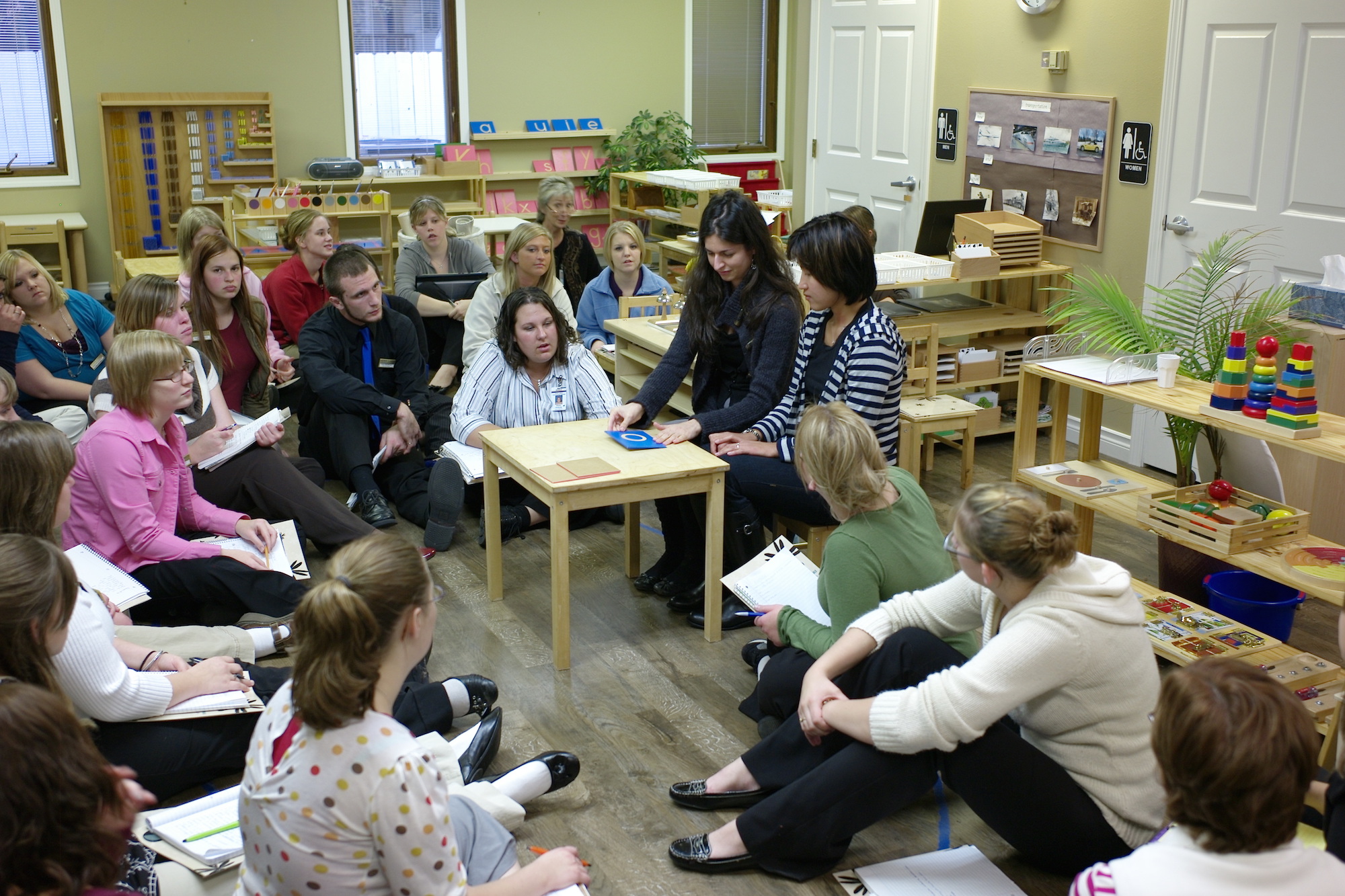Bringing Awareness to Montessori
Thoughts & Reflections
Over and over again, we’ve asked ourselves, “How can we bring a greater sense of awareness to Montessori?” It has so much to offer, and yet, it often seems as if it’s just an alternative. Of course, we believe that Montessori is truly for everyone. We also believe that is should be a mainstay of public discourse and, more importantly, that it is poised to become an international movement.
One of the ways in which we’ve developed to bring awareness to Montessori, and it may seem obvious, is education. We’ve tried to reach out to our community, and in particular, our local colleges. Most early childhood education programs only offer a cursory glance at Montessori, reading a few key selections from the oeuvre, but not engaging with their local schools. We’re hoping to change that.
To that end, we’re pleased to report that within the past few years, we’ve had the unique opportunity to host a number of local college classes, from Iowa, Minnesota, Nebraska and South Dakota. More often than not, we like to walk these classes through the prepared environment, pointing out the key activities and highlighting the Montessori method. We take questions throughout. Then, as the students depart, we like to leave them with a little packet of information. We thought we’d take this opportunity to post a few of those notes below.
Maria Montessori.
Maria Montessori was born in Italy in 1870. She graduated from the University of Rome La Sapienza Medical School in 1896 becoming one of the first Italian female physicians. As a member of the University Physician Clinic, she attempted to educate the mentally challenged. Her medical practices permitted an interest in education, especially in observing how precisely children learn and in what capacities. After much success, she was asked to open a school for children in Rome. The Casa dei Bambini, or Children’s House, opened January 6, 1907. As a result of her practices and the introduction of a new form of eduction, centered specifically on the child, her principles spread throughout the world producing a global Montessori vision for education that persist to this day. Maria Montessori died in the Netherlands in 1952.
Research.
It must be remembered that first and perhaps foremost, Maria Montessori is a physician, then an educator. More specifically, she is trained in the medical profession, one of the first female physicians in Italy, and self-taught in the field of education. The best formulae that one can reach is: Maria Montessori is a physician of education. Or, to put it differently, an educator of life. This is a radical departure from our typical appreciation of what education “is”, and what it should “become”.
Personal Aims and Interests.
We are interested in the entire oeuvre of Maria Montessori. In particular, and more specifically, we are interested in the outlines of three precise theories that accompany her revolution in education. First, the conception of collaboration. Collaboration is promoted, instead of competition, as a necessary and fundamental principle to her approach to early childhood education. Second, the absolute and undeniable focus that she places on the concrete. The concrete, in contrast to the abstract, is what leads Montessori to construct a metaphysical form of education that is based on the real. Thirdly, and just as importantly, we are concerned to address the fundamental import that Montessori places on the environment, in co-ordination with the ‘coming alive of sentience, as sentience’. That is to say, we are extremely interested in the exploration of the role that the ‘prepared environment’ plays in the formation of the child.
Montessori Education:
- Emphasis placed on cognition
- Emphasis placed on social formation
- Teacher as guide or director of classroom
- Environment and method promote self-discipline
- Primarily individual instruction
- Teacher encourages collaboration as teaching
- Mixed age children
- Child chooses their own work
- Self-teaching materials help child learn concepts
- Child is allocated time to complete lessons
- Learning pace set by individual student
- Child discovers errors
- Internal reinforcement of learning success
- Personal feelings of progress or lack thereof
- Child is free to work in the classroom
- Group participation elective
- Method for self care learned – sensory materials
Traditional Education:
- Emphasis placed on rote learning
- Emphasis placed on rote social behavior
- Teacher controls the classroom
- Teacher is the only disciplinarian
- Primarily group instruction
- Teaching is conducted by teacher
- Same age children
- Teacher assigns work
- Teacher instructs child on concepts
- Specific time allotted on projects
- Learning pace set by group
- Teacher highlights child’s errors
- External reinforcement of learning success
- Rewards and punishments
- Normally assigned a specific location in class
- Group participation required
- Self care left to parents
Hope you enjoyed this post on bringing awareness to Montessori. If you have topics you would like us to address, please send us an email: hello@baandek.org. We’d love to hear from you.
Written by:
Baan Dek
